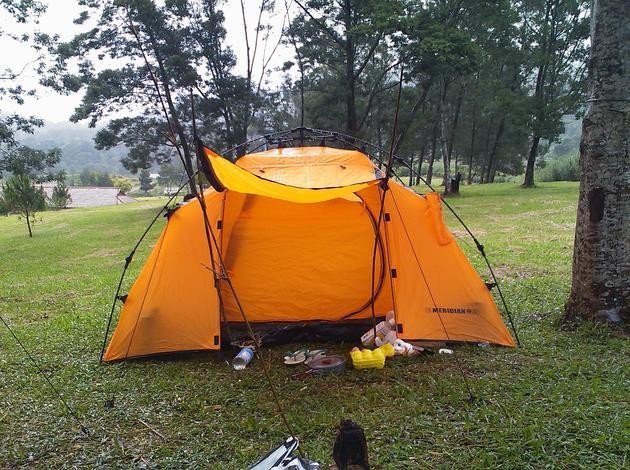Portable Tents For Travelers
Nov 22, 2022
Here's a list of portable tents that are best suitable for all kinds of travelers, be it solo, or with family, or even with an entire car.
1. Basic Ridge Tent
This is the stereotype of all tents. With two poles holding the fabric at the ends, and a cross pole called a ridge holding the roof, giving it a tent shape. The material used is a lightweight nylon which makes it easy for backpackers to carry. These tents are stable and best used for sleeping purpose. These tents are best used by 1-2 travelers.
2. Dome Tent
This bubble-shaped tent is named so due to its dome-like structure. This tent comes with three or four hoops crossing in the middle to give the dome shape. They are perfect for camping with families and groups. Made generally of lightweight material, these free-standing tents are pretty sturdy as the shape helps them to withstand even strong winds. They are best used when going hiking or camping with the family.
3. Hoop Tent
This tent is one of the highly compact and lightweight tents available today. This tent has a single hoop at the entrance, and an upright pole holding up the tent at the other end. Pegs need to be staked such that we get optimum pitching, and guy ropes are tied to the pegs. Having no ridge pole is beneficial as it takes up less space, but it provides no shield from wind, if not staked well. These tents are used mostly by hill climbers, who walk for long distances before setting up camp.
4. Pop-up Tent
For first-timers, pop-up tents are the best as they are fast and convenient to set up. Being light in weight, it is best for overnight accomodation, where travelers wish to save as much time as they can. The tent is as its name suggests, it pops up to its shape on its own. It is advisable to secure it with guy ropes in order to deal with unpredictable changes in weather conditions. These tents will be perfect for music festival campers.
5. Tunnel Tent
As the name suggests, this tent is in the shape of a tunnel. The tent has two or more hoops running across its length, giving it the aforementioned shape. These tents don't have a fixed front end, and they are pretty sturdy if pitched end on into the wind. Although, these tents might not be of much help in case of side winds. For large families going for camping, tunnel tents are the best.
6. Cabin Tent
These tents were designed for those camping with their cars, as the they can accomodate the car inside them. The material is a little heavier than others, which makes them more durable. The tent must be staked properly in order to prevent sagging of the material.
7. Inflatable Tent
As the name suggests, this tent inflates up at the flick of a switch. While these tents are heavy and expensive, they save a lot of time. All that is needed to set up camp with this tent, is to peg the four corners firmly, and switch on the compressor. The tent will erect itself within minutes.
8. Frame Tent
These tents use the basic rigid poles, along with angles joints. They offer a good amount of space, along with stability when erected properly. The only disadvantage being that these tents can be heavier and time consuming for setup. Since the poles are generally made of steel, these tents are useful for long term tent erection.
9. Tarp Tent
These tents are single walled, with built-in floor and net protection against bugs, They are easy to set up and are light to carry for backpackers. Solo travelers can opt for these tents.
10. Bell Tent
A very simple structure, this tent is supported by a single pole and the material is cotton canvas. The tent is secured with the help of pegs and guy ropes on the walls, and is best for a day's camping.
11. Instant or Quickpitch Tent
As the name suggests, these tents can be erected instantly. The frame of the tent has a long coiled spring that uncoils when it is left free. It is best used for short amount of time. These tents are suitable for light weather conditions.
12. Geodesic Tent
These tents are for the adventure junkies who like to set up camp under extreme climatic conditions. The tent has a number of flexible poles criss-crossing over the surface. This distribution of stress helps the tent to withstand extreme conditions. These are best used in case you wish to peak the Everest.

